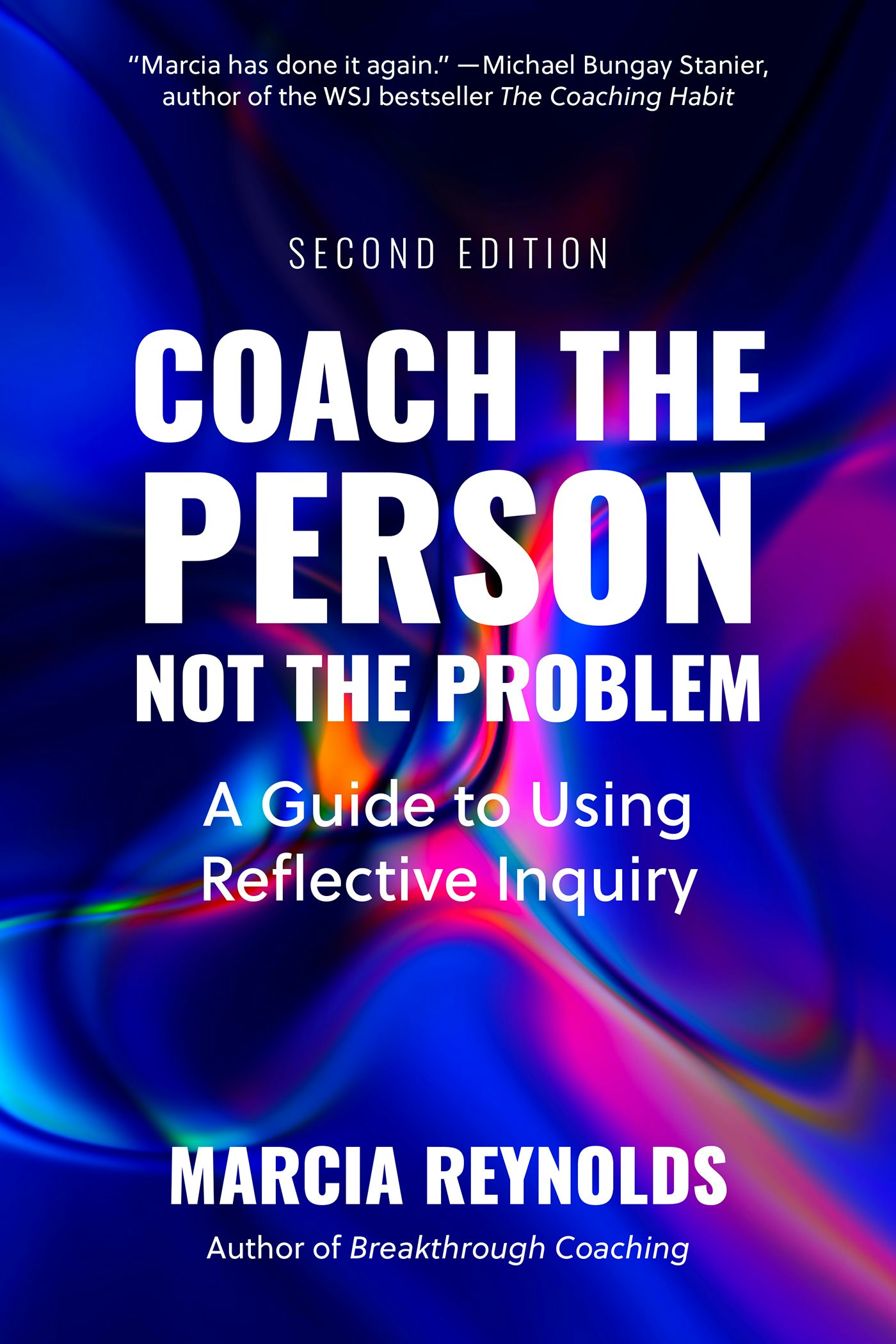Sort by:
“This is a must-read for bosses and subordinates alike, as it exposes our flaws but teaches us how we can work together to achieve our common goals.”
-Ellen Coulter, President, The Advantage Software Company
What do you do when the biggest threat to your project is your boss? It's not that your boss is out to get you. In fact, bosses generally mean well. But clueless leadership from a well-intentioned boss can sometimes cause more damage than a criminal mastermind tying your project to the railroad tracks.
Lucky for you, the best project managers have got "managing up" down to a fine science. The reason is that project managers are often outside consultants with no formal position in the organization they're working for, putting them at a double disadvantage. Learn how tried-and-tested techniques from the discipline of project management can be used to manage five main "types" of difficult bosses. Dana Brownlee, certified Project Management Professional, has repeatable, reliable techniques based on years of project consulting, which apply to each of these difficult boss types. Your boss will be eating right from your hand in no time.
-Ellen Coulter, President, The Advantage Software Company
What do you do when the biggest threat to your project is your boss? It's not that your boss is out to get you. In fact, bosses generally mean well. But clueless leadership from a well-intentioned boss can sometimes cause more damage than a criminal mastermind tying your project to the railroad tracks.
Lucky for you, the best project managers have got "managing up" down to a fine science. The reason is that project managers are often outside consultants with no formal position in the organization they're working for, putting them at a double disadvantage. Learn how tried-and-tested techniques from the discipline of project management can be used to manage five main "types" of difficult bosses. Dana Brownlee, certified Project Management Professional, has repeatable, reliable techniques based on years of project consulting, which apply to each of these difficult boss types. Your boss will be eating right from your hand in no time.
Discover a breakthrough way to link employees' daily job duties to the organization's purpose, and watch employee engagement, productivity, and customer satisfaction soar!
Leaders and managers-especially those with customer-facing employees-want engaged, positive employees who are filled with purpose. The problem is they falsely assume that simply regurgitating the corporate mission statement at meetings and performance reviews is enough, that employees will make the connection between those high ideals and their daily tasks. But most of the time, they don't. Instead, they give lip service to purpose, and initiatives go nowhere.
The solution is the Revelation Conversation. In these one-on-one meetings, executives work with employees to take those words off the wall and into their day-to-day work lives. Revelation Conversations make purpose tangible, help employees see how the sometimes mundane functions they carry out not only connect to an inspiring collective purpose but can reflect their personal goals and aspirations as well.
Steve Curtin shows how leaders at all levels and in any industry can conduct energizing, motivating Revelation Conversations with their direct reports. When purpose becomes personal, the result is greater enthusiasm, creativity, and satisfaction for employees and leaders alike.
Leaders and managers-especially those with customer-facing employees-want engaged, positive employees who are filled with purpose. The problem is they falsely assume that simply regurgitating the corporate mission statement at meetings and performance reviews is enough, that employees will make the connection between those high ideals and their daily tasks. But most of the time, they don't. Instead, they give lip service to purpose, and initiatives go nowhere.
The solution is the Revelation Conversation. In these one-on-one meetings, executives work with employees to take those words off the wall and into their day-to-day work lives. Revelation Conversations make purpose tangible, help employees see how the sometimes mundane functions they carry out not only connect to an inspiring collective purpose but can reflect their personal goals and aspirations as well.
Steve Curtin shows how leaders at all levels and in any industry can conduct energizing, motivating Revelation Conversations with their direct reports. When purpose becomes personal, the result is greater enthusiasm, creativity, and satisfaction for employees and leaders alike.
Change initiatives fail because humans are hardwired to return to what's worked for us in the past. This book offers a straightforward process for rewiring ourselves and those we lead to be more change-capable.
Erika Andersen says avoiding change is a biological imperative. Change initiatives often fail because leaders don't overcome individuals' instinctive impulse toward homeostasis – stable conditions needed for survival. Incorporating a fictional story of a jewelry business changing generational hands, Andersen lays out a five-step process for addressing both the human side of change and its practical aspects:
Step 1-Clarify the change and why it's needed: Get clear on what the change is and the benefits it will bring.
Step 2-Envision the future state: Build a shared picture of the post-change future.
Step 3-Build the change: Bring together a change team, engage key stakeholders, and plan the change.
Step 4-Lead the transition: Build a transition plan that supports the human side of the change, then engage the whole organization in making the change.
Step 5-Keep the change going: Work to make your organization permanently more change-capable.
With engaging opportunities to self-reflect and try out the ideas and approaches throughout, this book is a practical guide to thriving in this era of nonstop change.
Erika Andersen says avoiding change is a biological imperative. Change initiatives often fail because leaders don't overcome individuals' instinctive impulse toward homeostasis – stable conditions needed for survival. Incorporating a fictional story of a jewelry business changing generational hands, Andersen lays out a five-step process for addressing both the human side of change and its practical aspects:
Step 1-Clarify the change and why it's needed: Get clear on what the change is and the benefits it will bring.
Step 2-Envision the future state: Build a shared picture of the post-change future.
Step 3-Build the change: Bring together a change team, engage key stakeholders, and plan the change.
Step 4-Lead the transition: Build a transition plan that supports the human side of the change, then engage the whole organization in making the change.
Step 5-Keep the change going: Work to make your organization permanently more change-capable.
With engaging opportunities to self-reflect and try out the ideas and approaches throughout, this book is a practical guide to thriving in this era of nonstop change.
Uncover the six blind spots that derail women's career paths and learn strategies to effectively overcome them for an impactful, sustainable career.
Professional women are subject to blind spots-obstacles that can minimize career potential, impact, or advancement. Some women end up drifting instead of driving through their careers, going it alone instead of building a posse, and leaving their “reputationality” (that special something we are known for) to chance.
Authors and executive coaches Brenda Wensil and Kathryn Heath have spent decades coaching more than 800 women and working with women executives, middle managers, and professionals across industries and age groups. In this book, they outline six challenges women commonly face on their professional journeys and map a way to accelerate through them for higher-impact careers. Readers will learn how to
· Set a vision, strategy, and plan for their careers
· Learn who they are, what they offer, and how to tell their stories
· Seek and act on feedback to guide their paths
· Prepare and practice for the best outcomes
· Enlist help and support from others
Effective women leaders inspire innovation, sustain profitability, manage risk, and create environments for inclusion and diversity to increase. Chock full of strategies, stories, and practical skills, this book will hasten a woman's progress and impact as a professional woman and liberate her to excel in her career on her own terms.
Professional women are subject to blind spots-obstacles that can minimize career potential, impact, or advancement. Some women end up drifting instead of driving through their careers, going it alone instead of building a posse, and leaving their “reputationality” (that special something we are known for) to chance.
Authors and executive coaches Brenda Wensil and Kathryn Heath have spent decades coaching more than 800 women and working with women executives, middle managers, and professionals across industries and age groups. In this book, they outline six challenges women commonly face on their professional journeys and map a way to accelerate through them for higher-impact careers. Readers will learn how to
· Set a vision, strategy, and plan for their careers
· Learn who they are, what they offer, and how to tell their stories
· Seek and act on feedback to guide their paths
· Prepare and practice for the best outcomes
· Enlist help and support from others
Effective women leaders inspire innovation, sustain profitability, manage risk, and create environments for inclusion and diversity to increase. Chock full of strategies, stories, and practical skills, this book will hasten a woman's progress and impact as a professional woman and liberate her to excel in her career on her own terms.
For coaches who want to transform lives, this updated bestselling guide reveals how reflective inquiry—not just asking questions—creates breakthrough moments that AI can never replicate.
In this powerful second edition, ICF global past president Marcia Reynolds shows why reflecting clients’ thoughts creates deeper transformation than questioning alone. With AI coaching tools emerging, Reynolds demonstrates how human connection remains irreplaceable for genuine breakthroughs.
“Coaches rely far too much on asking open-ended questions,” says Reynolds. When clients hear their thoughts spoken by someone else, they critically examine their thinking. Drawing from brain science and decades of coaching experience, Reynolds provides specific techniques for transformational conversations.
This expanded edition is 20 percent new content including the following:
In this powerful second edition, ICF global past president Marcia Reynolds shows why reflecting clients’ thoughts creates deeper transformation than questioning alone. With AI coaching tools emerging, Reynolds demonstrates how human connection remains irreplaceable for genuine breakthroughs.
“Coaches rely far too much on asking open-ended questions,” says Reynolds. When clients hear their thoughts spoken by someone else, they critically examine their thinking. Drawing from brain science and decades of coaching experience, Reynolds provides specific techniques for transformational conversations.
This expanded edition is 20 percent new content including the following:
- Fresh research on identity formation
- New coaching examples
- Guidance on differentiating human coaching from AI
An award-winning CEO and communications expert shows how authentic leadership eliminates the need for the shortcuts that sabotage success. “Fake it till you make it” just doesn't work-at least not long enough to build a sustainable business.
Self-doubt and the intense pressure of facing the unknown are real problems for entrepreneurs and leaders. But there's a difference between feigning confidence and running a con game; Elizabeth Holmes and Billy McFarland thrived on faking it for a short while, but their businesses were all aspiration, no foundation, and so collapsed disastrously. This book revisits the core of leadership, defines authentic, reality-based business integrity, and shows readers how to attain and maintain it.
Through the double lens of running her own PR firm in Silicon Valley and advising hundreds of other executives, award-winning CEO Sabrina Horn shows leaders how to attend to the fundamentals and gain the clarity of thought necessary to make sound business decisions. She delivers real, workable strategies and best practices with firsthand accounts of painful lessons. Horn's fake-free advice will empower leaders to disarm fear and organize risk, manage setbacks, plan for the unexpected, and create a company culture designed for long-term, sustainable growth.
Self-doubt and the intense pressure of facing the unknown are real problems for entrepreneurs and leaders. But there's a difference between feigning confidence and running a con game; Elizabeth Holmes and Billy McFarland thrived on faking it for a short while, but their businesses were all aspiration, no foundation, and so collapsed disastrously. This book revisits the core of leadership, defines authentic, reality-based business integrity, and shows readers how to attain and maintain it.
Through the double lens of running her own PR firm in Silicon Valley and advising hundreds of other executives, award-winning CEO Sabrina Horn shows leaders how to attend to the fundamentals and gain the clarity of thought necessary to make sound business decisions. She delivers real, workable strategies and best practices with firsthand accounts of painful lessons. Horn's fake-free advice will empower leaders to disarm fear and organize risk, manage setbacks, plan for the unexpected, and create a company culture designed for long-term, sustainable growth.
From a founding member of the coaching movement comes a detailed guide to mastering one of a coach's toughest skills: thoughtfully reflecting clients' words and expressions back to them so they see themselves and their world through new eyes.
“Coaches rely far too much on asking open-ended questions,” says Marcia Reynolds. But questions only seek answers-inquiry provides insight. When, instead of just questions, clients hear their thoughts, opinions, and beliefs spoken by someone else, it prompts them to critically consider how their thinking affects their goals. Reynolds cites the latest brain science to show why reflective inquiry works and provides techniques, tips, and structures for creating breakthrough conversations.
This book will free coaches from the cult of asking the magical question by offering five essential practices of reflective inquiry: focus on the person, not the problem; summarize what is heard and expressed; identify underlying beliefs and assumptions; unwrap the desired outcome; and articulate insights and commitments. Using these practices, combined with a respectful and caring presence, helps create a space where clients feel safe, seen, and valued for who they are. Coaches become change agents who actively recharge the human spirit. And clients naturally dive deeper and develop personalized solutions that may surprise even the coach.
“Coaches rely far too much on asking open-ended questions,” says Marcia Reynolds. But questions only seek answers-inquiry provides insight. When, instead of just questions, clients hear their thoughts, opinions, and beliefs spoken by someone else, it prompts them to critically consider how their thinking affects their goals. Reynolds cites the latest brain science to show why reflective inquiry works and provides techniques, tips, and structures for creating breakthrough conversations.
This book will free coaches from the cult of asking the magical question by offering five essential practices of reflective inquiry: focus on the person, not the problem; summarize what is heard and expressed; identify underlying beliefs and assumptions; unwrap the desired outcome; and articulate insights and commitments. Using these practices, combined with a respectful and caring presence, helps create a space where clients feel safe, seen, and valued for who they are. Coaches become change agents who actively recharge the human spirit. And clients naturally dive deeper and develop personalized solutions that may surprise even the coach.


















